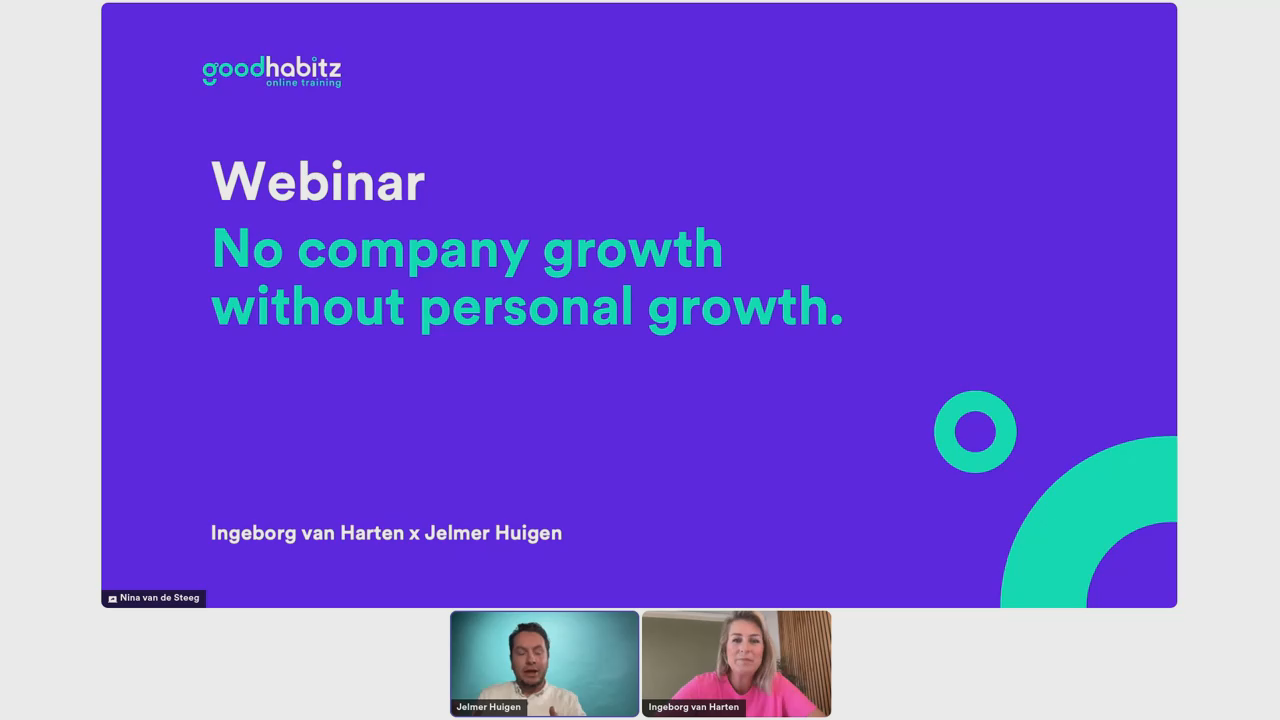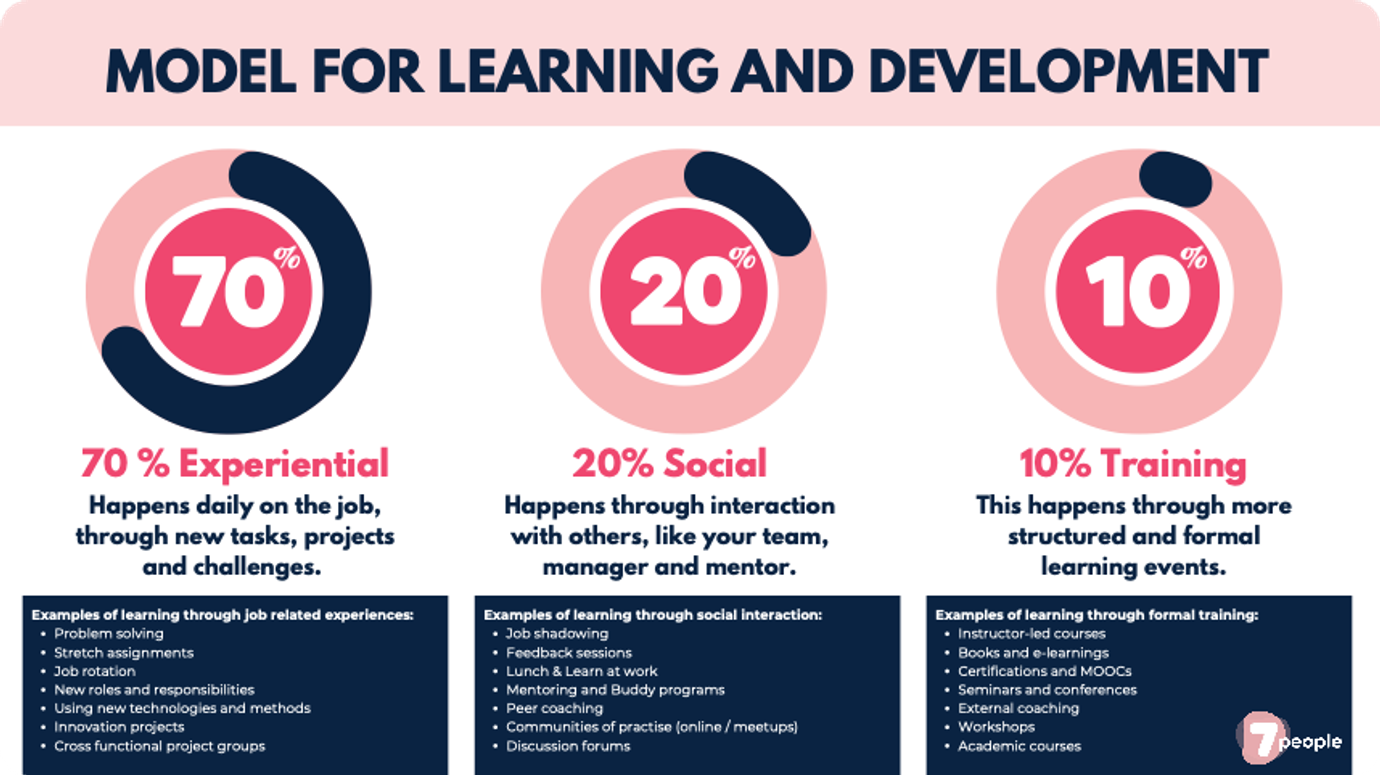No company growth without personal growth:
how to build a learning culture (that sticks)
Catch all the insights from our latest webinar with the special guest Ingeborg van Harten, founder of 7people, and host Jelmer Huigen, Customer Success Team Lead at GoodHabitz.
They dive into why continuous learning is essential for company growth and share practical tips on how to kickstart simple initiatives that foster a thriving learning culture.
Don't have time to watch it? No worries, discover the 5 key takeaways from the webinar below.

With rapid technological changes and evolving skills requirements, companies that prioritize learning are better positioned to stay agile and competitive. Investing in skill development means employees can remain relevant and adaptable, which keeps organizations forward-thinking and resilient. Organizations that neglect L&D risk falling behind as they struggle to attract and retain talent with the right expertise.
Ingeborg mentions that “Companies that remain on top invest in their people’s growth, adapting with the skills they’ll need tomorrow.” This underscores the importance of L&D teams aligning learning opportunities with both immediate and long-term strategic goals, to make sure that the workforce is prepared for the future.
Encouraging employees to take ownership of their personal development transforms learning from a mandated task into a motivating opportunity. This requires more than just offering a learning budget or set of courses. Employees thrive when they can choose skills and projects that resonate with their professional aspirations, so framing growth as an essential part of both personal and company success is crucial.
Asking employees, “How are you staying at the top of your field?” reinforces the idea that personal growth is a responsibility and a vital contribution to the company’s success. When employees see their learning aligned with their personal goals and the company’s mission, they feel more motivated to engage with the resources provided.
The 70-20-10 model provides a holistic approach to learning, showing that development doesn’t only happen in formal settings. According to this framework, 70% of learning comes from on-the-job experiences, 20% from social interactions, and 10% from formal courses. Expanding learning beyond structured courses and integrating it into everyday tasks maximizes growth opportunities and makes learning an ongoing, natural part of work.
L&D leaders can foster this model by encouraging cross-departmental projects, promoting “lunch and learn” sessions, or establishing mentoring programs. By creating an environment where learning becomes embedded in employees’ routines, companies enable employees to grow in ways that feel organic and less disruptive to their schedules.

Managers are in a unique position to encourage growth, as they know their team members’ strengths, challenges, and career aspirations best. While HR and L&D teams design and support learning initiatives, managers should take an active role in motivating their teams and creating spaces for development.
Making learning a regular discussion in one-on-ones, team meetings, and performance reviews reinforces the idea that growth is part of the job, not an extra task. Managers can lead by example by sharing their own learning experiences, participating in training sessions, and demonstrating their own curiosity. “When managers show a commitment to learning, it sends a powerful message to the team that growth is valued and supported.” When managers model a growth mindset, it encourages employees to embrace it as well.
In fast-paced environments, learning often gets deprioritized in favor of urgent tasks. The solution? Make time for learning a non-negotiable aspect of the workweek. Some companies implement this by blocking out time on employees’ calendars explicitly for learning or by rewarding top performers with extra time or budget for development. When employees know that learning time is valued and protected, they are more likely to take their development seriously.
This shift—treating learning as a reward rather than an optional activity—demonstrates the company’s commitment to growth. When curiosity and learning are both encouraged and incentivized, employees feel empowered to invest in themselves and bring new skills back to their roles. “Freeing up time and rewarding curiosity create a culture where learning is celebrated, not sidelined.”
